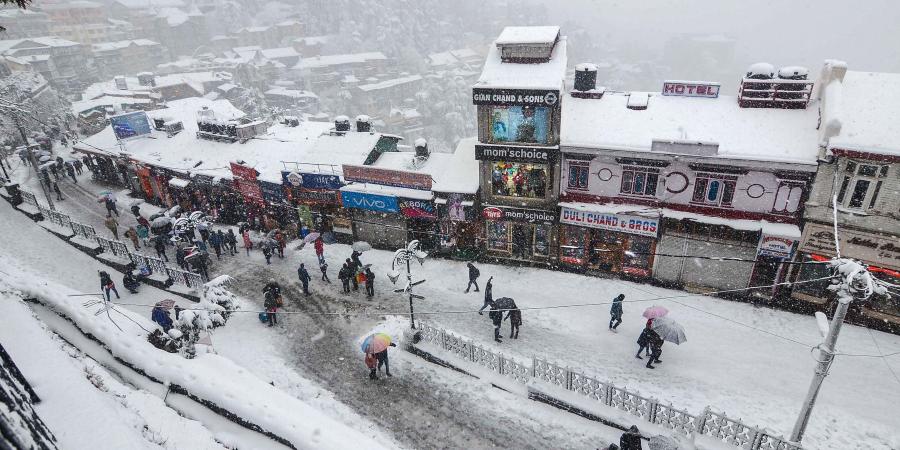
Less snowfall, warmer winters: Shimla losing not just its charm but also water sources
Scanty snowfall in Shimla – which now mostly presents a brownish look with dry grass on the hills in winter – also means perennial water sources are not being replenished and there’s a water scarcity

Shimla, the capital of Himachal Pradesh, which used to be draped in white and attracted tourists from all over, now mostly presents a brownish look with dry grass covering the hills in winter.
There is a growing concern among environmentalists and locals over the rising temperatures and depleting snow cover with the snowline moving upwards and the ‘Queen of Hills’ gradually losing her winter charm. Its effect now is more visible than ever in the hill city’s dwindling winter tourist inflow and drying water sources.
Also read: UN report reveals global temperatures rising to ‘catastrophic’ levels
Scanty snowfall
According to climate experts, the snowline is receding and Shimla’s adjoining tourist towns Kufri and Narkanda, popular skiing destinations, too are experiencing scanty snowfall.
The state capital’s tourism industry is taking a hit due to the falling numbers and there is a dire need to find more tourist spots and activities in and around the city, Tourism Industry Stakeholders Association president M K Seth said.
Tourism contributes about 7.5 per cent of the hill state’s GDP.
Water shortage
Snow also plays a vital role in replenishing the city’s perennial sources of water such as springs, streams and rivulets. Scanty snowfall means the water sources are drying up and the town is facing water scarcity.
Also watch: Will global warming lead to severe drought in India?
In 2018, the problem of water shortage had risen to such an alarming level that water supply had to be restricted to every fifth or sixth day, severely denting the inflow of tourists during the peak summer season.
As per meteorological department data, the snowfall from November to March in Shimla in 1989-90 was 556.7 cm while the figure stood at just 105.2 cm in the corresponding period of 2008-09.
“There is an erratic pattern of precipitation as climate change is being witnessed due to global warming. Extreme weather events are being witnessed and a gradual decrease is being seen in the number of snow days,” the director of the local meteorological office in Shimla Surender Paul told PTI.
Recalling his experience during winters, octogenarian O P Sood said, “Plaintive monkeys used to wail down the trees in search of food and raid houses and shops with more than usual daring, and most of the residents used to migrate to the plains during winters. But things have changed now.”
Increasing human activity
Reckless cutting of hills, construction of multi-storey concrete buildings, manifold increase in population and increasing human activity have become the bane of Shimla and the town is now warmer than plains during winters, climate experts said.
A joint study by the State Centre on Climate Change (SCCC), Himachal Pradesh, and the Ahmedabad-based Space Applications Centre of ISRO using Advanced Wide Field Sensor (AWiFS) satellite data map revealed that the state witnessed 18.5 per cent decrease in snow cover in 2020-21.
As per the SCCC, the rise in temperature in the north-western Himalayan region was about 1.6 degrees Celsius in the last century but the warming rate of Shimla was higher than Leh and Srinagar during 1991-2002 as compared to the earlier decades. The gross rise in the mean air temperature during 1980-2002 in the north-western Himalayas as a whole was about 2.2 degrees, it showed.
Also read: Global warming: Why each fractional degree change matters
Changing cropping pattern
Apple growers in the upper Shimla region are now deprived of “white manure” (snow), and are adopting new varieties and techniques to sustain.
“Temperatures are low in December and January but adequate moisture is not available due to scanty snowfall. As a result, the cropping pattern is changing with apple growers taking to high density apple plantation,” Special Secretary, Horticulture, Sudesh Mokta said.
The apple economy in the state is worth around Rs 5,000 crore.
(With Agency inputs)


